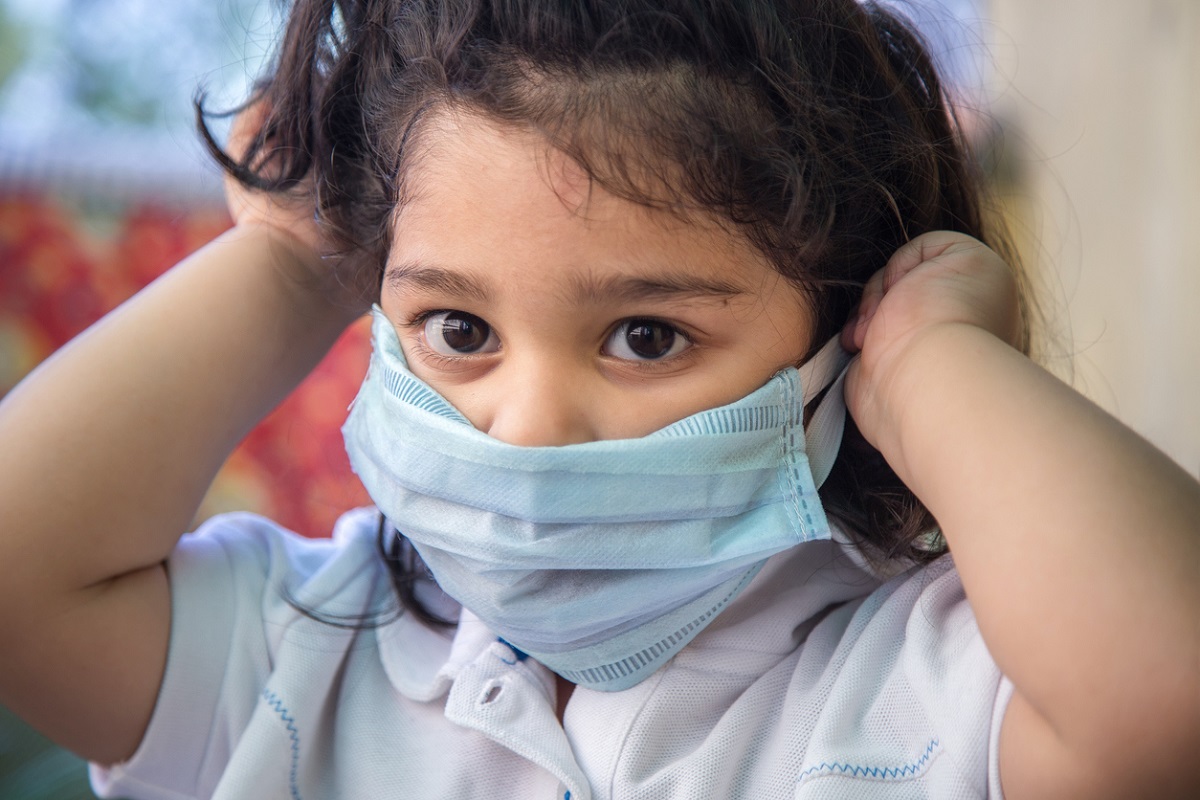India records 122 fresh COVID-19 cases
The total COVID-19 caseload of the country has risen to 4,50,26,261. These also include the JN.1 Covid variant cases.
Many states like Delhi, Maharashtra and Tamil Nadu has prepared their own action plans.

representational image (iStock)
Have we got the signals right this time? Is the third wave of coronavirus coming to India? Even as the debate is going on, Dr. Vipin Srivastava, an eminent physicist and former pro-vice-chancellor, University of Hyderabad, claims that it hit India on July 4.
There is an adage saying ‘forewarned is forearmed.’ So this time, India should not be caught napping as happened during the second wave in March. No doubt the government and the people were complacent and believed the pandemic was over. Now we are back to square one. In the past week, top scientists, epidemiologists and the Central and state governments have warned the public about a third wave that will hit India soon.
Advertisement
Experts fear that it could trigger a devastating response amid a slow vaccination drive and lifting of lockdowns, though they do not know how and when it will happen. Debate is still going on on whether the third wave will affect children more, or what kind of new variants might emerge.
Advertisement
Prime Minister Narendra Modi himself has cautioned the nation this week. “The virus does not come and go on its own… we bring it with us when we disobey the rules. Experts are warning us repeatedly that careless behaviour – like overcrowding will lead to an increase in Covid cases,” he said while addressing the North-east chief ministers.
Dr. V K Paul of the Niti Ayog, who is head of the Covid strategy team, has warned that people’s carelessness is only one part of it. “Third Covid-19 wave has already hit the world, may enter India soon,” he has warned. “Steps should be taken to prevent crowds…We all need to work together to stop the third wave of the Covid19 pandemic,” Mr Modi appealed to the people.
The Prime Minister is clearly concerned about the casual attitude of people crowding markets and public places and not following Covid regulations. But state governments like Uttar Pradesh are planning to allow superspreader events like the Kanwar yatra.
The Apex court has asked the state to reconsider allowing the yatra. The Indian Medical Association (IMA) has said it was “painful to note that both the government and public are complacent and hold mass gatherings without following Covid protocols”. While the IMA has warned that the third wave is imminent and inevitable, the WHO expects the delta variant to be the dominant strain worldwide.
The Prime Minister has said that unless people behave and follow regulations, no amount of government control will not work. Last year when the first lockdown was imposed, people followed rules out of fear. Now they are exasperated. Fewer cases have been reported in northern and central India, while the south, and north-east India are still reporting high numbers daily.
The health ministry has said that approximately 73.4 per cent of the new cases reported so far in July were from Kerala, Maharashtra, Tamil Nadu, Andhra Pradesh, and Odisha. Rural India is much more affected as around 65 per cent of the people live in villages, where the health infrastructure is weak. India is vaccinating approximately four million people every day.
Still, it needs to reach 8-9 million per day to reach its target of vaccinating everyone above 18 by the end of this year. The main causes for concern are continuing superspreader events, slow vaccination coverage, emergence of new variants and not following Covid regulations. The pandemic has also exposed the underfunding and neglect of the public healthcare system in India.
Healthcare spending, private and public, has been around 3.6 per cent of GDP for the past six years. Developed nations spend a far higher proportion of their GDP on health. So what should be done? First of all, those who hesitate to take the vaccine should be encouraged to shed their inhibitions. Secondly, the medical infrastructure needs expansion, particularly in rural areas.
Testing and isolating Covid patients remains very important. Expanding health insurance cover will help. The Union Cabinet has cleared a package of Rs 20,000 crore to face the third wave. This is mainly for improving healthcare infrastructure, increasing hospital beds, and adding critical medical equipment and drugs. Funding and strengthening pandemic research will also be expanded. Many states like Delhi, Maharashtra and Tamil Nadu has prepared their own action plans.
They have constituted committees of experts to prepare a road map for the coming months. The third wave might not be avoided but there should be preparation to meet its onslaught. This needs adequate funding, availability of vaccines, expansion of medical facilities to rural areas, and creating awareness among the public.
There can be no excuse for not taking precautions. Above all, the public also has a responsibility to cooperate by following regulations. Or else the third wave would be more devastating than the first and second.
Advertisement